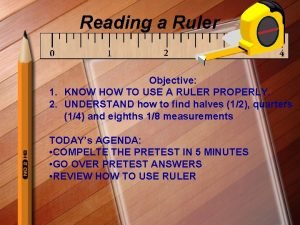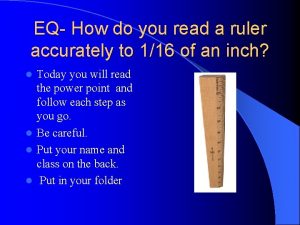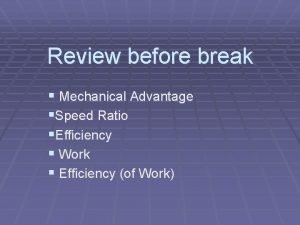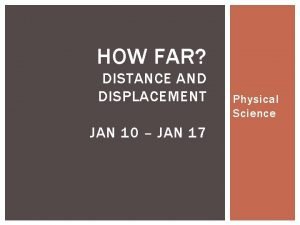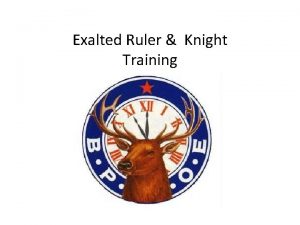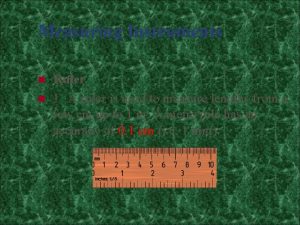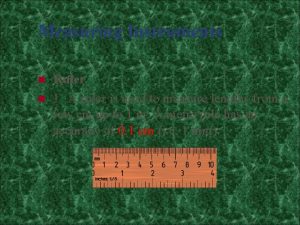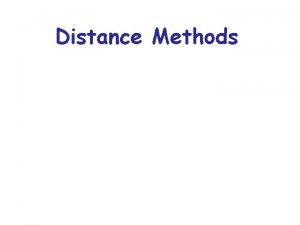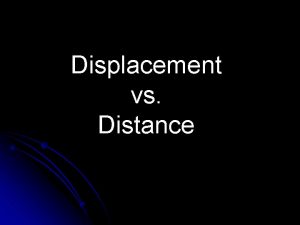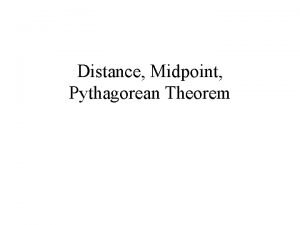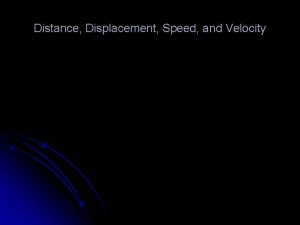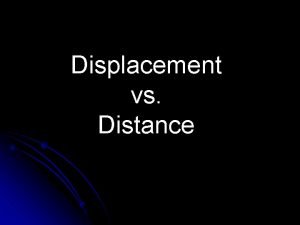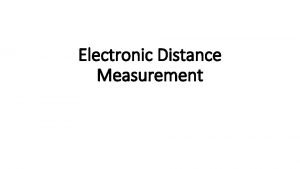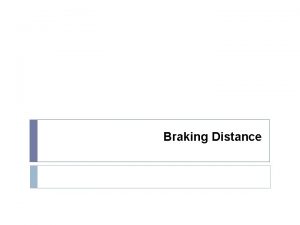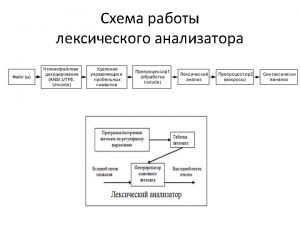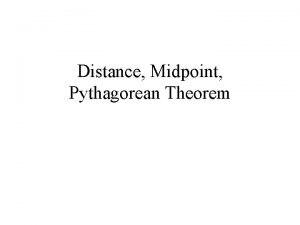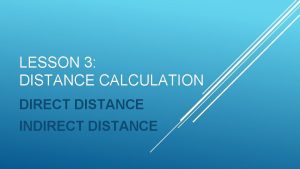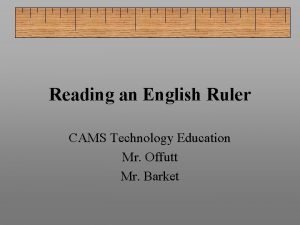Reading a Ruler 0 1 The distance is
































- Slides: 32

Reading a Ruler

0 1 The distance is representing a full inch.

The full inch is divided into two sections. The number of sections determines the denominator. 0 Notice the line height. 1 1 2

Each half inch section is divided into two sections. Notice the line height. It’s getting smaller. Remember the number of sections determines the denominator. 0 What will the denominator be for the new lines? 1 2 1

Each half inch section is divided into two sections. Notice the line height. It’s getting smaller. 0 The denominator is 4 because of the 4 sections created by the new lines. 1 1 4 2 3 4 1

Each forth inch section is divided into two sections. Notice the line height. It’s getting smaller. 0 The denominator is 8 because of the 8 sections created by the new lines. 1 1 1 8 1 4 2 3 8 5 8 3 4 7 8

Each eighth inch section is divided into two sections. Notice the line height. It’s getting smaller. The denominator is 16 because of the 16 sections created by the new lines. 0 1 1 1 4 1 8 1 16 3 4 2 3 8 5 16 5 8 7 16 9 16 7 8 11 13 15 16 16 16

You now know all the fractions on a common school ruler. But how can you tell the fractions just by look at the line heights? 0 1 1 1 4 1 8 1 16 3 4 2 3 8 5 16 5 8 7 16 9 16 7 8 11 13 15 16 16 16

PAY CLOSE ATTENTION NOW 0 You can tell what the fraction is for each line by covering the lines up. 1

PAY CLOSE ATTENTION NOW Cover the lines up. 0 1

PAY CLOSE ATTENTION NOW expose the first set of lines. HOW many sections are created? 0 1

2 sections. That tells me the denominator 0 1 2

Count by odd numbers for the numerator. Remember the 2 sections. That tells me the denominator. 0 1 1 2

Expose the next set of lines. The number of sections created tells me the denominator. 0 1 1 2 4 4

Count by odd numbers for the numerators. 0 1 1 4 1 2 3 4

Expose the next set of lines. The number of sections created tells me the denominator. 0 1 1 2 1 4 8 3 4 8 8 8

Count by odd numbers for the numerators. 0 1 1 8 1 4 1 2 3 8 3 5 8 4 7 8

Expose the next set of lines. The number of sections created tells me the denominator. 0 1 1 2 1 4 1 3 8 8 16 16 3 16 4 5 8 16 16 7 8 16 16 16

Count by odd numbers for the numerators. 0 1 1 2 1 4 1 3 8 8 1 16 3 3 5 16 16 4 5 8 7 16 9 16 7 8 11 13 16 16 15 16

You try it. Expose the first set of lines. 0 1

What is the denominator? 0 1

The denominator is 2. Now what is the numerator? 0 1 2

The numerator is 1. It’s the first odd number. Now try the next set of lines. 0 1 1 2

The denominator will be 4. The numerators will be 1 and 3. Count by odd numbers. 0 1 1 2

The denominator will be 4. The numerators will be 1 and 3. Count by odd numbers. Now expose the next set of lines. 0 1 1 4 1 2 3 4

What will denominator be? The numerators will be? Remember, count by odd numbers. 0 1 1 4 1 2 3 4

The denominator will be 8. And the numerators will be 1, 3, 5 and 7. Now expose the last set of lines. 0 1 1 2 1 1 8 4 3 8 3 5 8 4 7 8

What will denominator be? The numerators will be? Remember, count by odd numbers. 0 1 1 2 1 1 8 4 3 8 3 5 8 4 7 8

The denominator will be 16? The numerators will be? 1, 3, 5, 7, 9, 11, 13 and 15. Remember, you count by odd numbers. 0 1 1 2 1 4 1 3 8 8 1 16 3 3 5 16 16 4 5 8 7 16 9 16 7 8 11 13 16 16 15 16

Why do we count by odd number? Remember math class and reducing fractions. We only have odd number in the numerators because an even number could be reduced. 0 1 1 2 1 4 1 3 8 8 1 16 3 3 5 16 16 4 5 8 7 16 9 16 7 8 11 13 16 16 15 16

All the red fractions can be reduced. Do you see any patterns? 0 1 1 1 8 1 4 3 2 3 8 5 8 4 7 8 1 2 3 4 5 6 7 8 9 10 11 12 13 14 15 16 16 16 16

Take the Measuring Test Level 1
 While reading activities
While reading activities Ruler reading test
Ruler reading test 2 3/16 on a ruler
2 3/16 on a ruler The ratio of input distance to output distance
The ratio of input distance to output distance How is distance different from displacement
How is distance different from displacement Hệ hô hấp
Hệ hô hấp Số nguyên là gì
Số nguyên là gì đặc điểm cơ thể của người tối cổ
đặc điểm cơ thể của người tối cổ Tỉ lệ cơ thể trẻ em
Tỉ lệ cơ thể trẻ em Vẽ hình chiếu vuông góc của vật thể sau
Vẽ hình chiếu vuông góc của vật thể sau Các châu lục và đại dương trên thế giới
Các châu lục và đại dương trên thế giới ưu thế lai là gì
ưu thế lai là gì Môn thể thao bắt đầu bằng từ đua
Môn thể thao bắt đầu bằng từ đua Tư thế ngồi viết
Tư thế ngồi viết Hình ảnh bộ gõ cơ thể búng tay
Hình ảnh bộ gõ cơ thể búng tay Cái miệng xinh xinh thế chỉ nói điều hay thôi
Cái miệng xinh xinh thế chỉ nói điều hay thôi Mật thư tọa độ 5x5
Mật thư tọa độ 5x5 Tư thế ngồi viết
Tư thế ngồi viết Thứ tự các dấu thăng giáng ở hóa biểu
Thứ tự các dấu thăng giáng ở hóa biểu Gấu đi như thế nào
Gấu đi như thế nào Thẻ vin
Thẻ vin Thơ thất ngôn tứ tuyệt đường luật
Thơ thất ngôn tứ tuyệt đường luật Sự nuôi và dạy con của hươu
Sự nuôi và dạy con của hươu Từ ngữ thể hiện lòng nhân hậu
Từ ngữ thể hiện lòng nhân hậu Thế nào là hệ số cao nhất
Thế nào là hệ số cao nhất Diễn thế sinh thái là
Diễn thế sinh thái là Vẽ hình chiếu vuông góc của vật thể sau
Vẽ hình chiếu vuông góc của vật thể sau Ng-html
Ng-html Phép trừ bù
Phép trừ bù Lời thề hippocrates
Lời thề hippocrates đại từ thay thế
đại từ thay thế Vẽ hình chiếu đứng bằng cạnh của vật thể
Vẽ hình chiếu đứng bằng cạnh của vật thể Glasgow thang điểm
Glasgow thang điểm

